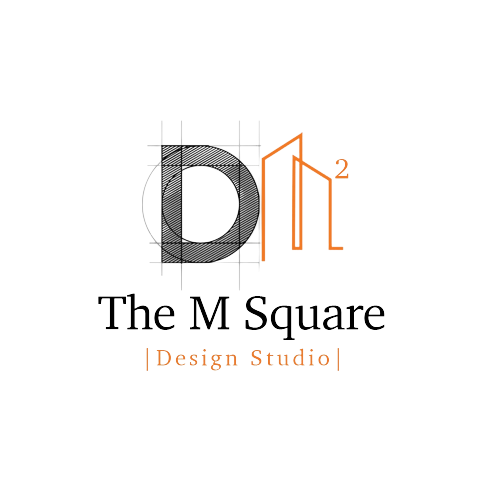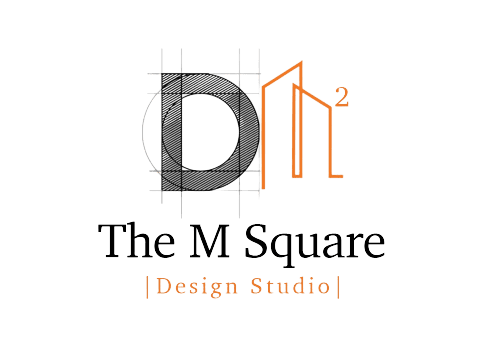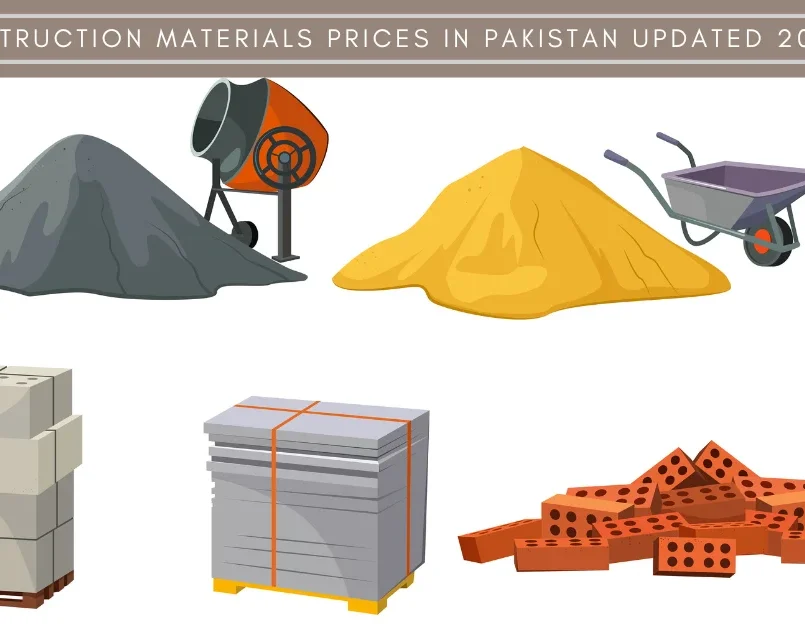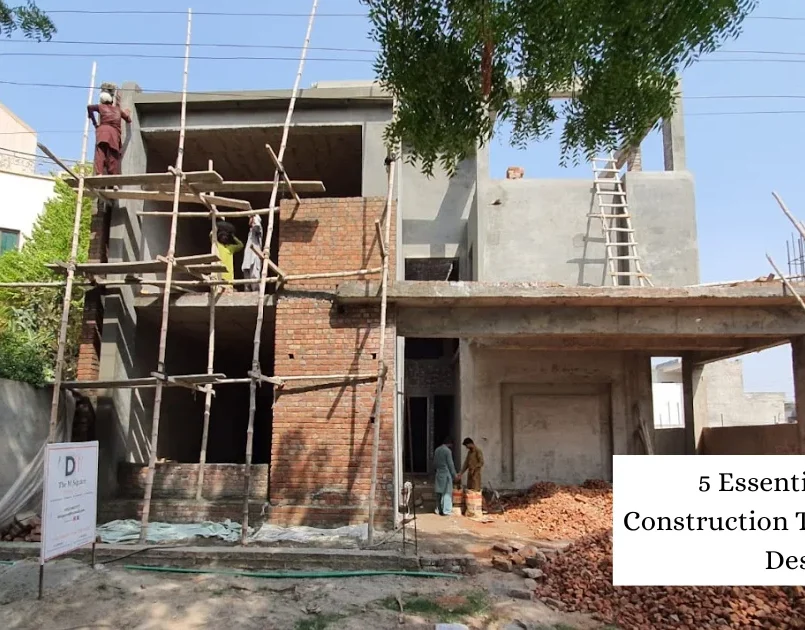How To Design A Home? 10 Steps To Design Your Dream Home
Creating a home is a thrilling adventure that enables you to turn your visions into actuality. Whether you are starting from the ground up or remodeling a current area, the experience can be difficult but also fulfilling. Each stage, from outlining your desires to picking the right materials, is important in designing a home that showcases your style and fits your lifestyle needs.


Table of Contents
ToggleStep 1: Define Your Needs and Wants
Prioritize your requirements by evaluating your lifestyle before starting the design process. Take into account elements like the number of bedrooms, layout preferences, and wanted amenities. By clearly identifying your desires and requirements, you can develop a design that matches your ideal vision for a home.Assessing Your Lifestyle
Consider how you utilize your existing space and pinpoint areas that could be enhanced. Do you enjoy hosting gatherings and require a large kitchen and dining space? Are you someone who works from home and needs a separate office area? You can customize your home design to meet your unique requirements by knowing your lifestyle.Identifying Must-Have Features
Create a catalog of must-have characteristics for your ideal home that cannot be compromised on. Prioritize features that will improve your daily life and add to your overall happiness, whether it’s a gourmet kitchen, a luxurious master suite, or a cozy outdoor living space.Step 2: Set a Budget
Before the beginning of your journey in home design, it is crucial to set up a practical budget. Take into account variables like building expenses, supplies, and expert charges, and distribute money appropriately. By establishing a budget at the beginning, you can prevent exceeding expenses and maintain financial discipline throughout your project.Understanding Cost Factors
Investigate the expenses linked to building and remodeling homes in your region. The cost of labor, materials, and permits can differ greatly based on where you are and the size of your project. By grasping these cost elements, you can create a budget that mirrors your financial situation and objectives.Allocating Funds Wisely
Once you have established your budget, arrange your spending to concentrate on the areas that matter most to you. Dedicate funds to critical components like structural strength, top-notch materials, and expert services, and be ready to cut back on non-essential areas where necessary.Step 3: Choose a Style
The design of your house establishes the atmosphere for its overall appearance and mirrors your individual preferences and tastes. Selecting a style that resonates with you, whether it be modern minimalism, rustic charm, or traditional elegance, is crucial for achieving a cohesive and harmonious design.Exploring Different Architectural Styles
Seek inspiration from different architectural styles worldwide and examine the unique qualities of each style. There are numerous design styles to choose from, ranging from modern and stylish to traditional and timeless. Take into account exterior finishes, rooflines, and window treatments when figuring out which style aligns with your vision.
Matching Your Style to Your Preferences
Consider how your selected style fits with your way of living and personal tastes. If you appreciate open, spacious environments, a modern style with simple lines and minimalistic decorations could be perfect. On the other hand, if you desire warmth and comfort, a classic design with luxurious textures and ornate details could be more appropriate for your preferences.Step 4: Consider the Floor Plan
The layout of your home is essential, as it sets the groundwork for its design and greatly influences how it functions and flows. Decide between an open-concept layout or a traditional arrangement, taking into account the purpose of each space and how they connect.Evaluating Space Requirements
Consider the dimensions and design of each room and how they will meet your requirements. Take into account variables like the movement of traffic, arrangement of furniture, and availability of natural light to maximize the functionality of every area. By thoroughly assessing the amount of space you need, you can guarantee that your floor layout will be suitable for your current and future needs.Maximizing efficiency and performance
Make sure to consider how the rooms are connected and how they flow from one area to the next. Strive to establish a coherent progression that enables smooth navigation within the household. Take into account elements like lines of sight, entrances, and flow patterns to improve the efficiency of your layout design.Step 5: Select Exterior Features
The exterior of your home is the first thing visitors see, so it’s essential to make a lasting impression. From architectural details to landscaping elements, every aspect of your home’s exterior should contribute to its curb appeal and reflect your style.Creating outdoor living areas
Enhance your landscape enjoyment by creating well-designed outdoor spaces that expand your living area. Whether it be a small patio, a large deck, or a peaceful garden oasis, outdoor living areas provide a way to interact with nature and appreciate the beauty of your environment. Take into account elements like seating arrangements, fire pits, and plants to design appealing outdoor spaces that can be utilized throughout the year.Step 6: Focus on Interior Design
Designing the interior of your home reflects your personality and style, making it important to establish functional and welcoming spaces. Every aspect, from furniture and decorations to color schemes and materials, plays a role in creating the atmosphere of your home.Designing Purposeful Environments
Think about the function of each room and create layouts that complement your daily routine and interests. Prioritize functionality and comfort in your interior design, whether it’s for family gatherings in a cozy living room, culinary adventures in a sleek kitchen, or rest in a serene bedroom.Infusing Personality and Style
Inject your personality into your home’s design with thoughtful touches and personalization. Whether it’s artwork, family photos, or cherished heirlooms, incorporating meaningful elements into your decor adds character and warmth to your space. Experiment with color, texture, and pattern to create a look that feels uniquely yours.Step 7: Pick Quality Materials
Quality materials are the foundation of a well-built home and play a significant role in its longevity, durability, and aesthetic appeal. From flooring and countertops to fixtures and finishes, choosing high-quality materials ensures that your home will stand the test of time and retain its value for years to come. Select materials that strike the right balance between durability and aesthetics, taking into account factors such as maintenance requirements and longevity. Invest in materials that are built to last and that can withstand daily wear and tear, particularly in high-traffic areas such as kitchens and bathrooms. Consider timeless finishes and neutral color palettes that will stand the test of time and provide a versatile backdrop for your design.Step 8: Hire Professionals
Constructing or updating a residential property is a challenging project that needs the knowledge of experienced professionals. Gathering the appropriate team, which includes builders, designers, contractors, and architects in Lahore, is crucial for achieving a positive result and a seamless construction process.Architects and Designers
Collaborate with skilled architect in Lahore and designers who can transform your ideas into a practical and visually attractive design. Work closely with experts who grasp your requirements and desires and can provide innovative answers to design obstacles.
Collaborating with Contractors and Builders
Select reliable contractors and builders with a demonstrated history of providing top-notch craftsmanship and outstanding service from a good Construction Company in Lahore. Set up transparent communication methods define expectations from the beginning, and make sure to stay in touch consistently during the construction phase. Remain receptive to feedback and take the initiative to resolve any issues or concerns promptly to keep your project on track and under budget.Step 9: Plan for Sustainability
As awareness of environmental issues grows, more homeowners are prioritizing sustainability in their home design and construction projects. From energy-efficient features to eco-friendly materials, there are many ways to reduce your home’s environmental footprint and create a healthier living environment for you and your family. Explore eco-friendly building practices and design strategies that minimize waste and promote resource conservation. Consider features such as passive solar design, green roofs, and rainwater harvesting systems that harness natural resources and reduce reliance on traditional utilities.Step 10: Personalize Your Space
Add personal touches and unique elements to your home to make it truly reflect your personality and style. Adding unique decorations and personalized touches to your space brings a feeling of coziness and genuineness that cannot be imitated.Reflecting on Your Personality and Preferences
Don’t hesitate to showcase your personality in the design choices for your home, as it should represent your true self and your preferences. Fill your surroundings with things that bring happiness and motivation, like travel keepsakes, family pictures on a wall, or a selection of beloved books and artwork. Design spaces that connect with you and evoke a sense of genuine comfort and belonging.Final thoughts
Creating a home is a very individual and fulfilling journey that enables you to craft an environment that mirrors your distinct characteristics and way of living. By adhering to these ten guidelines, you can turn your dream home into a reality and experience many years of comfort, joy, and satisfaction in a place that is uniquely yours.Contact us for freindly advice
pk-admin
Related Posts
if you are going to construct a new...
Have you ever had a moment to imagine...





